Pack your bags for Te Waipounamu – New Zealand’s incredible South Island – a superlative confluence of adventure tourism, outstanding food and wine, spectacular scenery… and lots and lots of sheep.
It was a slightly daunting task. I was trying to plan my itinerary for my first trip to New Zealand, but found myself a bit dizzied by all the options available. I only had a week, but with so many appealing things to see and do, it soon became evident that I’d have to make some decisions. When I travel, I usually prefer spending more time in one area and exploring it in depth rather than racing from place to place without ever really experiencing anything meaningful. So when considering New Zealand for a holiday, the obvious first question was, “North Island or South Island?” Each island is a destination in its own right, and each offers a rather different vacation experience.
It’s not surprising I was so overwhelmed. Despite its relatively small size, this isolated island country in the South Pacific caters incredibly well to tourists, offering a tremendous amount of appeal and an abundance of variety to the global traveller. For my trip, I sought an experience that would deliver natural scenery, great food and wine, and perhaps some of the adventure for which New Zealand is
rightfully famous, and for that, my choice was clear: I was heading for the South Island, or Te Waipounamu in the native MÄori language. So after an admittedly lengthy flight to Auckland on the North Island, where I overnighted to collect my wits and shake off a bit of jet lag, I caught an easy domestic flight down to Queenstown, located in the South Island’s beautiful Central Otago region.
Queenstown is laden with adventurous activities and is also a stunningly scenic resort town in the shadow of the Remarkables mountain range of the Southern Alps. Naturally, this makes it a popular base for visitors to the surrounding ski areas, which include Cardrona Alpine Resort, Coronet Peak, The Remarkables, and Treble Cone. Set on the shores of the vast Lake Wakatipu, Queenstown and its surrounding areas were initially well-known to the indigenous MÄori, and eventually settled by Europeans in the 1860s. The 1862 discoveries of gold in the Arrow River and Shotover River hastened the development of Queenstown and led to its permanent settlement.
Adventure Capital
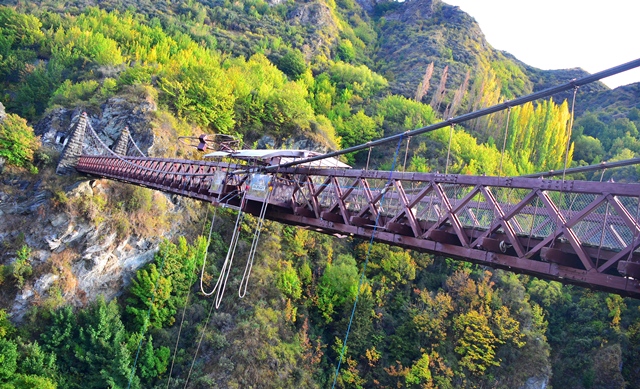
Today, winter activities play a major role in Queenstown, but adventure tourism is the order of the day year-round. Over 200 operators offer a host of activities including skiing, snowboarding, hang gliding, jet boating, whitewater rafting, fly fishing, mountain biking, skateboarding, tramping, hiking, skydiving, cliff jumping, paragliding, zip lining, and of course, bungy jumping. For those wanting to test their nerves while tethered only to a giant rubber band, New Zealand is where it all began, with A.J. Hackett establishing the world’s first permanent commercial bungy jumping operation on a suspension bridge spanning the turquoise waters of the Kawarau River near Queenstown, a 43-metre plunge you can still take today.
For me, while pondering whether to jump out of a plane or stay safely on the ground and enjoy some of the outstanding wines of the region – and I ultimately did both, I’m happy to report – I stayed at the charming Queenstown Park Boutique Hotel, just one of a wide range of accommodations in Queenstown that run the gamut from budget hostel to private apartments to international chain hotels to luxury B&Bs, many with sweeping views of the stunning Lake Wakatipu and Remarkables range.
Though affording no such view, my hotel offered excellent service and a superb location, only a short stroll into the heart of town, where I was beset by possibilities for shopping, dining, and sightseeing.
To quench my thirst for adventure, I opted for throwing myself out of an airplane, which was just about the first thing I did there, followed by the comparatively mellow jet boating along a picturesque river and zip-lining along steel cables through a forest of evergreen trees at the top of a nearby mountain, accessed by a steep and scenic gondola ride. I considered bungy jumping, but in the end, decided that skydiving had provided rather enough jumping thrills for one holiday.
Wining And Dining
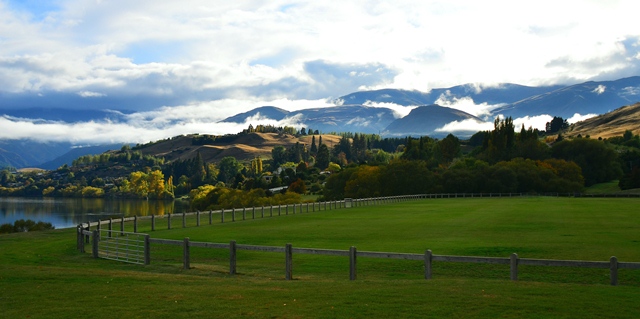
You might not think of New Zealand as a culinary destination, but with plentiful grazing land and no shortage of sunshine, clean air, and unspoiled water, the country has in fact parlayed these resources into a fine reputation for lamb, beef, and dairy products. Naturally, as an island nation, good seafood isn’t hard to come by, either, and for oenophiles, some truly outstanding Pinot Noirs and Sauvignon
Blancs are produced here, too, with numerous wine regions dotting the South Island, including the famed Marlborough.
During my stay, one special favourite recommended to me by the hotel’s staff was a veritable wine nirvana in the centre of town called Wine Tastes. There, I was able to load up a card and use any of their many Enomatic wine machines to taste over 80 wines by the glass. With a warm, comfortable ambiance and a selection of salami- and cheese-centred tasting platters to accompany the chosen wines, this was a place I could have returned to again and again. And just across the street is one of Queenstown’s mainstay seafood venues, Fishbone, where I enjoyed a terrific meal. From great pubs like the 1876 Bar and Grill and burger joints like the popular Fergburger to fine dining at RÄtÄ by Josh
Emett and chic cafés such as Vudu, it’s a safe bet that visitors will never go hungry in Queenstown.
South to Nature
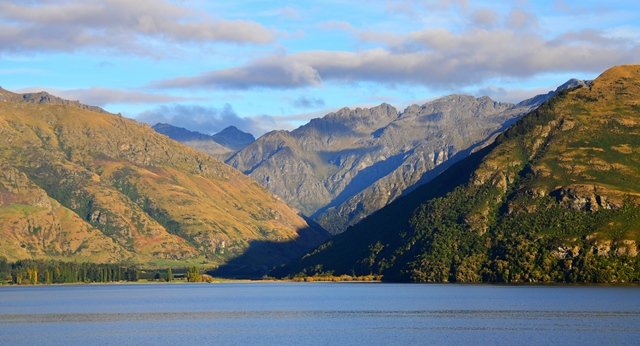
Apart from its own considerable appeal, Queenstown is also the jumping-off point to South Island’s breathtaking Fiordland region, a sprawling, unspoiled landscape that assaults your senses with staggering beauty, crashing waterfalls, vast glaciers, fields of lavender, primeval forests, and much more. After a terrific journey by scenic coach through lakes, forests, and mountains, as well as the engaging little town of Te Anau, the true gateway to Fiordland, I took an enjoyable overnight cruise on Milford Sound, or Piopiotahi in MÄori, perhaps the country’s top tourist destination and almost certainly its most scenic. Once we were at sea, I not only enjoyed relaxing with newfound friends over restaurant-calibre food in the dining hall, but also had the chance to take out a sea kayak to explore the various inlets of the sound. We also had the distinct treat of being accompanied by a group of playful bottlenose dolphins who stayed with us for nearly an hour, leaping and twirling in the cruise ship’s bow wave. Later, near the soaring Stirling Falls, which plunges 155 metres into pristine emerald waters, we saw a sizeable gathering of fur seals. I’m told that sometimes, cruisers can even see whales and penguins, but our wildlife sightings were limited to dolphins, seals, and a number of large seabirds.
From Milford Sound, visitors also have the option to take a scenic flight back to Queenstown via fixed-wing airplane or helicopter, weather permitting. However, averaging nearly seven metres of rainfall a year, Milford Sound is by far the wettest part of New Zealand and indeed one of the most rain-soaked places on Earth, so flights are by no means guaranteed. Sadly, morning clouds and rain indeed precluded my own planned flight back, so it was a return voyage by coach for me, which wasn’t all bad, and gave me more time to explore Te Anau again on the stopover there. Another treat was a chance encounter with a cheeky pair of camerafriendly Kea parrots, the world’s only alpine parrot, and one of several parrot species endemic to New Zealand. The Kea is found only in the mountainous regions of the South Island, and pulling over in the coach to see these engaging, clever birds showing off for all the visiting paparazzi in a chilly, misty mountainscape was a delight indeed.
Heading North
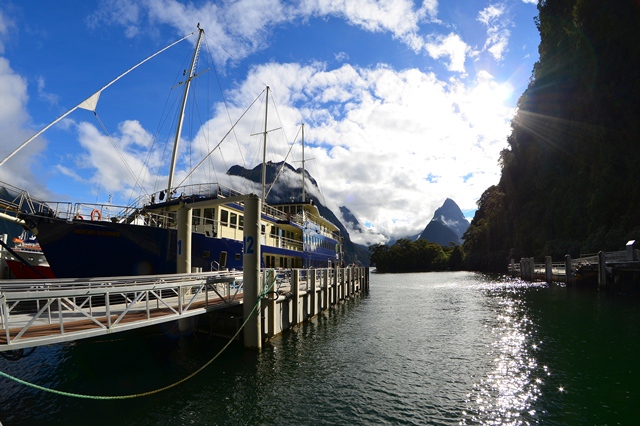
After a genuinely enjoyable time in the southern regions of the South Island, I rented a car and headed northward. New Zealand’s roads are excellent and virtually never congested. To give you some idea, the South Island is roughly the same size as Java, Indonesia. And whereas Java is home to some 143 million people, the South Island barely even cracks 1 million. Another useful comparison is that of the whole of New Zealand to the United Kingdom. Roughly the same size, but with 64 million calling the UK home compared with just 4.5 million Kiwis (77% on the North Island), you’ll likely see a lot more sheep in New Zealand than you will your fellow humans. For those of us used to crowds of people and nerve-fraying traffic jams in Kuala Lumpur or Penang, being in a car on the clear, open roads of New Zealand was truly a breath of fresh air. I took my time, pulling off repeatedly to snap photos or check out an intriguing shop, winery, or café. A side note on car rental: Even in town, taxis were incredibly expensive, so if you want to explore, renting a car and self-driving is not only easy and enjoyable, it makes economic sense, too.
One route north from Queenstown goes through the scenic town of Lake Tekapo, named for the glacially fed lake on which it sits, and stunningly backed by New Zealand’s loftiest peak, Mount Cook, or Aoraki in the MÄori language. For nature lovers, the wilderness and national park in which Mount Cook sits are natural wonderlands worthy of being explored and enjoyed. Amazing flightseeing tours are available from Lake Tekapo, and if mountains, glaciers, and amazing natural scenery are your thing, this is a grand place to spend a couple of days.
After overnighting in Lake Tekapo, I continued onward to Christchurch. Not far before reaching the South Island’s largest city, I made a stop along the Waimakariri River where I sped along the alpine river gorge on a speedy jet boat, taking in the amazing scenery, but also enjoying the thrill of speed, sharp turns, and a number of 360-degree spins in the clear blue glacial waters of the river.
Earthquake Echoes
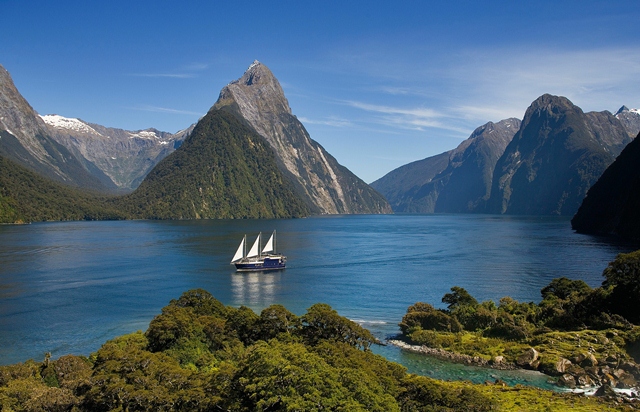
In February 2011, the city of Christchurch was devastated by an earthquake occurring on a Tuesday right at the busy lunchtime hour. Though not quite as strong as the quake that had struck just six months earlier, the 6.3 temblor was much shallower and closer to the city centre, and the violence of the ground shaking was among the most intense to have ever been recorded in an urban area. Buildings – many already weakened by the previous quake – collapsed, significant liquefaction occurred east of the city centre, damage throughout Christchurch was widespread, and 185 people lost their lives. Two substantial aftershocks, the latter as strong as the main quake, struck the city in June of that same year, causing still more damage. Arriving on the scene three years later, it’s not immediately evident that there was a major earthquake in the city, but it’s certainly clear that something is going on. Following the series of quakes, over 1,000 buildings in the central business district were demolished. Even today, a fair few condemned buildings still stand, vacant and cordoned off, silently awaiting their impending fate. The entire CBD is effectively a massive construction zone now, the city having opted to do it all in one major push, rather than implementing a recovery effort piecemeal over many years. A blizzard of orange cones, blocked streets, redirected travel, and temporary fencing is a stark testament to the destruction that was wrought by these earthquakes.
Yet, after spending some time in this stillcharming city and talking to its proud, resilient residents, there is absolutely no doubt in my mind that the Christchurch of tomorrow will be better and stronger than the Christchurch of yesterday. One particularly fascinating resident I met owns an eclectic café that is equally beguiling, built in the space that once housed the High Street Post Office and among the first CBD businesses to be re-established following the earthquake. Serving up delicious coffees, pastries, and other light fare in an environment that’s at once spacious yet intimate, the popular C1 Espresso Café also offers the unique experience of having your meals delivered to your table by a pneumatic tube, exactly what you’d see used for bank deposits.
When I visited, the only tube-delivered food was a trio of delicious sliders, served with a side of crispy fries, all delivered in a metal cylinder. The owner told me getting the system just right was a challenge, with more than one slider meal being forcibly ejected onto the table in a spray of ingredients that even the most creative chef couldn’t spin as a deconstructed slider. Now, though, the system works perfectly, zipping the cylinders full of sliders along at 100 km/hr. Another nice treat at C1 is the provision of complimentary, self-serve sparkling and still water fountains, incorporated imaginatively into antique fixtures such as a vintage sewing machine! It’s worth mentioning here that Christchurch has among the highestquality natural water supply of any city in the world, its water pure, clean, and naturally filtered, sourced from over 50 aquifers in the Christchurch-Canterbury region. So unlike many travel destinations, you can happily skip the bottled water when you visit Christchurch.
A Destination For All Seasons
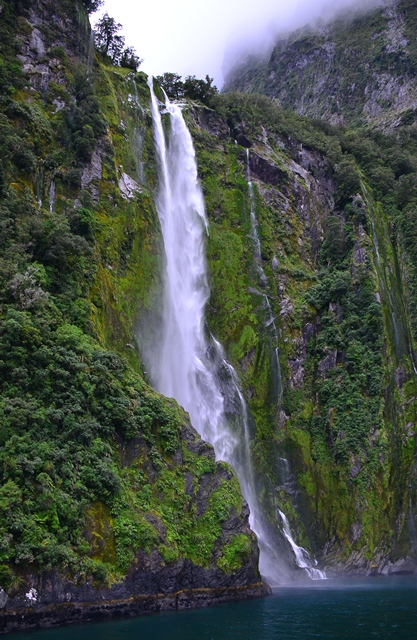
From Christchurch, I grabbed an inexpensive flight back to Auckland for my return to KL, wrapping up a splendid week of marvellous experiences. Offering a panoply of enjoyable activities, great food and wine, and fascinating native culture, all set against a stunning backdrop of natural grandeur and unspoiled, wide-open spaces, New Zealand is easily among the world’s most desirable travel destinations.
For many global wanderers, this isolated island nation is one of the last frontiers, justifiably among a choice few Holy Grails of tourism. For a holiday experience that perhaps no other place on Earth can rival, pack your bags for New Zealand, be sure to include your camera, and enjoy all that this incredible southern sensation the MÄori call Aotearoa has to offer.
——————————————————————————————————————-
GETTING THERE:
Malaysia Airlines flies non-stop to Auckland from KLIA, the only carrier to offer direct flights. Once there, domestic routes are well-served by the excellent Air New Zealand. www.airnewzealand.co.nz
Note that New Zealand biosecurity control upon entry is exceptionally strict. When completing the declaration checklist, err on the side of caution and declare anything potentially troublesome. Failure to declare can result in an on-the-spot NZ$400 fine. For more information,
see www.biosecurity.govt.nz.
STAYING THERE:
As a popular tourist destination, Queenstown offers a wide range of accommodations. Well worth considering is the lovely Queenstown Park Boutique Hotel. Situated on a large park in easy walking distance to town, this small boutique property exceeds expectations, particularly for service. www.queenstownparkhotel.co.nz
HELPFUL SITES:
Milford Sound Cruises www.realjourneys.co.nz
NZONE Skydive www.nzone.biz
Wine Tastes – Queenstown www.winetastes.co.nz
Wine Tours – Central Otago www.appellationcentral.co.nz
Flightseeing Tours – Lake Tekapo www.airsafaris.co.nz
Waimakariri River Jet Boating www.jetthrills.com
C1 Espresso – Christchurch www.c1espresso.co.nz
PLANNING YOUR TRIP:
www.newzealand.com/int/south-island
www.queenstownnz.co.nz
www.fiordland.org.nz
www.findchch.com
Read more:
"ExpatGo welcomes and encourages comments, input, and divergent opinions. However, we kindly request that you use suitable language in your comments, and refrain from any sort of personal attack, hate speech, or disparaging rhetoric. Comments not in line with this are subject to removal from the site. "


















